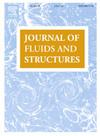用于非稳态跨声速空气动力学的递归图卷积多网格自动编码器
IF 3.4
2区 工程技术
Q1 ENGINEERING, MECHANICAL
引用次数: 0
摘要
在可预见的未来,围绕三维构型的非稳态、高保真空气动力载荷预测的计算成本仍将非常昂贵。基于深度学习的数据驱动算法对于复杂非线性系统的低阶建模来说是一种极具吸引力的选择。然而,要想适用于工程领域中典型的大型非结构化领域,还需要一种专门的方法。本研究提出了一种几何-深度学习多网格自动编码器框架,用于预测经历不同运动类型的有限跨度机翼的空气动力载荷的空间和时间演变。该新型框架利用了(a) 图神经网络用于气动表面网格,嵌入多分辨率算法以降低维度;(b) 循环方案用于气动载荷的时间进程。测试案例是在跨音速气流中的 BSCW 机翼,其俯仰和俯冲运动均为强制运动。对准稳定方法和循环方法进行了综合比较。模型训练需要进行四次非稳态高保真气动分析,每次分析需要大约两天的 HPC 计算时间。对于任何涉及四个以上案例的普通工程任务,使用所提出的框架作为替代预测工具,在计算成本方面可获得明显优势:在标准 GPU 上计算新案例只需几秒钟。本文章由计算机程序翻译,如有差异,请以英文原文为准。
Recurrent graph convolutional multi-mesh autoencoder for unsteady transonic aerodynamics
Unsteady, high-fidelity aerodynamic load predictions around a three-dimensional configuration will remain computationally expensive for the foreseeable future. Data-driven algorithms based on deep-learning are an attractive option for reduced order modelling of complex, nonlinear systems. However, a dedicated approach is needed for applicability to large and unstructured domains that are typical in engineering. This work presents a geometric-deep-learning multi-mesh autoencoder framework to predict the spatial and temporal evolution of aerodynamic loads for a finite-span wing undergoing different types of motion. The novel framework leverages on: (a) graph neural networks for aerodynamic surface grids embedded with a multi-resolution algorithm for dimensionality reduction; and (b) a recurrent scheme for time-marching the aerodynamic loads. The test case is for the BSCW wing in transonic flow undergoing a combination of forced-motions in pitch and plunge. A comprehensive comparison between a quasi-steady and a recurrent approach is provided. The model training requires four unsteady, high-fidelity aerodynamic analyses which require each about two days of HPC computing time. For any common engineering task that involves more than four cases, a clear benefit in computing costs is achieved using the proposed framework as an alternative predictive tool: new cases are computed in seconds on a standard GPU.
求助全文
通过发布文献求助,成功后即可免费获取论文全文。
去求助
来源期刊

Journal of Fluids and Structures
工程技术-工程:机械
CiteScore
6.90
自引率
8.30%
发文量
173
审稿时长
65 days
期刊介绍:
The Journal of Fluids and Structures serves as a focal point and a forum for the exchange of ideas, for the many kinds of specialists and practitioners concerned with fluid–structure interactions and the dynamics of systems related thereto, in any field. One of its aims is to foster the cross–fertilization of ideas, methods and techniques in the various disciplines involved.
The journal publishes papers that present original and significant contributions on all aspects of the mechanical interactions between fluids and solids, regardless of scale.
 求助内容:
求助内容: 应助结果提醒方式:
应助结果提醒方式:


